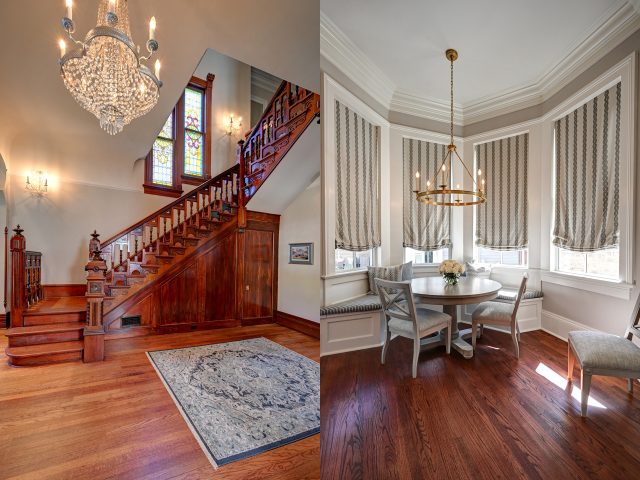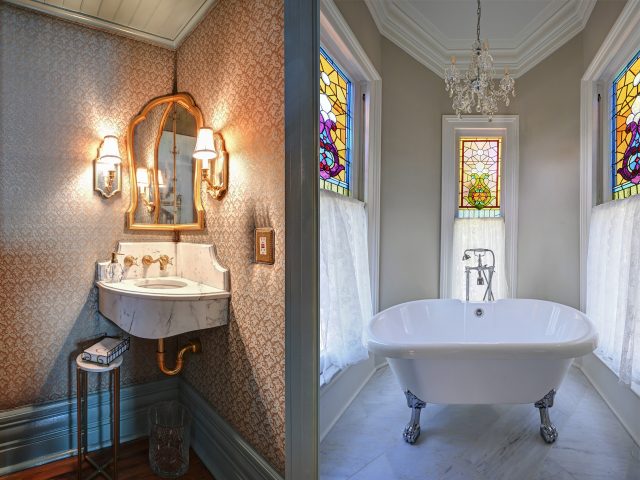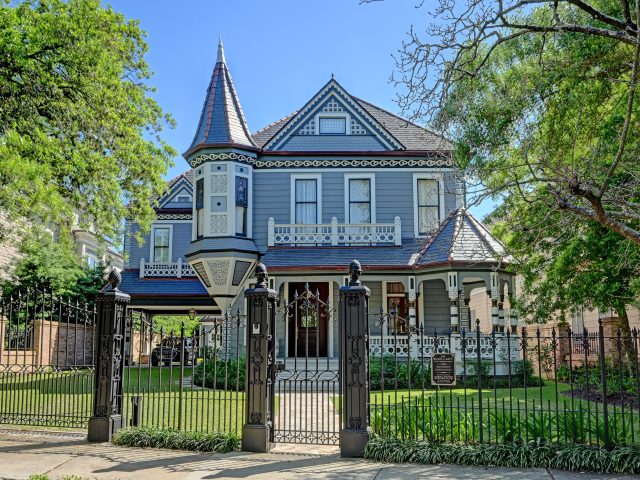Located on historic St. Charles Avenue in New Orleans, the Blue Lady stands as a proud counterpart to the famed Pink Lady, both landmark Queen Anne–style homes built in 1889 by architect Louis Lambert. (Preservation Resource Center, Where Y’at New Orleans) Designated as contributing buildings to the Uptown New Orleans Historic District and listed on the National Register of Historic Places, these homes are more than residences—they are living chapters of the city’s architectural narrative. (Preservation Resource Center)
Over time, the Blue Lady had suffered from poorly conceived alterations that eroded its original charm. Brian Gille Architects undertook a careful “peeling back” of these mismatched additions to restore its architectural integrity—preserving features like the original wooden staircase, iron fence, and Queen Anne detailing while weaving in modern upgrades like a port-cochère, media room, and pool cabana—all executed with seamless historical sensitivity. (Brian Gille Architects) Their work honors the layers of history while bringing the home into present-day life.

By revitalizing the Blue Lady, Gille Architects reaffirm the home’s significance to the historic streetscape of St. Charles Avenue—a visual landmark that continues to enchant both locals and visitors. (Preservation Resource Center) Such restorations reinforce New Orleans’ identity, where history is woven into everyday life. Preserving facades, millwork, and period charms helps tell the city’s story, fostering continuity and community pride.

Renovating an existing historic structure like the Blue Lady is inherently sustainable: it reuses materials and infrastructure rather than resorting to demolition and new construction. This approach conserves resources and reduces waste—making a clear environmental case for preservation over replacement.
In New Orleans, historic properties are often subject to oversight by bodies like the Historic District Landmarks Commission (HDLC), requiring a Certificate of Appropriateness before exterior work begins. Brian Gille Architects, with its award-winning history in New Orleans—including recognition from preservation commissions—ensures projects like the Blue Lady meet both design excellence and regulatory standards. (Brian Gille Architects)
Historic restorations can enhance property value, attract tourism, and enrich neighborhoods. Additionally, property owners may tap into federal and state tax credits—potentially covering 20–35% of renovation costs if the property qualifies and meets preservation standards. (Reddit) These incentives underscore how thoughtful restoration can be an economically savvy investment as well as a cultural one.

New Orleans residents frequently caution against gutting historic interiors—doing so risks erasing irreplaceable craftsmanship, color palettes, and unique architectural details. Gille’s work on the Blue Lady exemplifies the opposite: the project treasured and revived original staircase detailing and historic charm while integrating modern elements that feel inevitably harmonious. (Brian Gille Architects)
